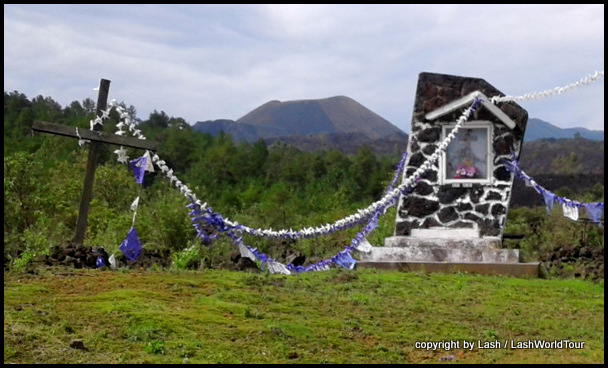
Volcan Paricutin – the world’s youngest volcano
A Visit to the World’s Youngest Volcano!
I’ll bet you didn’t know that The World’s Youngest Volcano is located in central Mexico? I certainly didn’t know until recently, when I consulted my Mexican guidebook for places to see inland from the gorgeous Michoacan coast, where I was beach-hopping for two weeks.
Once I read that, I knew a visit was in order.
So…any guesses as to how old the World’s Youngest Volcano is?
If we take into account that the world’s oldest mountains are estimated at over 3 BILLION years of age, then perhaps a guess of several million years old seems valid. But nope!
Perhaps 100,000 years old? Or even 10,000 years old? Nope!
Volcan Pericutin was born exactly on February 20, 1943! That makes it just 74 years young!
Yep, in fact the story of the rise of Volcan Pericutin sounds like one of those ‘Ripley’s Believe it or Not’ amazing, real life events.

panoramic view of Volcan Paricutin
As the story goes… On the fated day in early 1943, a local indigenous Purepecha farmer was working out in his corn fields when small holes started opening up in the land and spewing steam. Initially he proceeded to filled them back in. But when the holes began opening bigger & bigger, all hot, steamy and fiery, he threw down his farm tools and ran.
And good thing, too. Quite soon a volcano started sprouting up out of the ground, spewing lava, steam and smoke into the air. Slowly it grew higher and higher, spreading lava further and further a’field’ (literally) until it was threatening some nearby villages.
Over the course of one year, it grew to a height of 410 M / 1353 ft and slowly spilled lava over two villages.
The villagers smartly re-located themselves as the lava was approaching. However, the cathedral in small San Juan village was caught and buried up to its square tower in lava, which then dried into hard, sharp black volcanic rock. And there the cathedral rests to this day, its tower leaning up out of the desolate field of black rock like the Leaning Tower of Pisa.
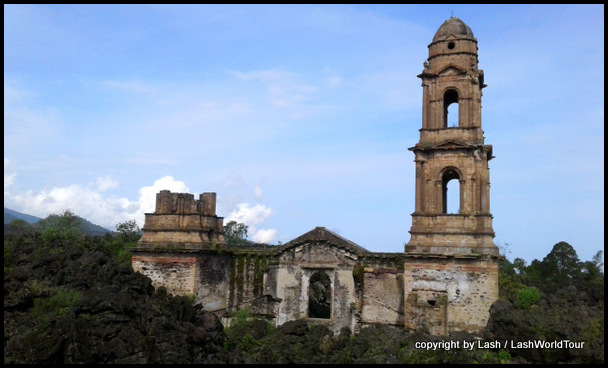
Cathedral San Juan Parangaricutiro ruins at Volcan Paricutin
The volcano continued growing taller and oozing out lava for the next ten years until it finally petered out in 1952 at a height of 2800 M / 9240 ft. Since then it has remained practically dormant, save for some hissing steam vents, and resting amidst its vast dried spiky fields of razor-sharp hardened lava, a dead zone of 20 sq km / 12 sq miles.
Volcan Paricutin and the cathedral ruins have been a tourist attraction ever since, with both Mexican and international tourists flocking in to see this young volcano, sprouted during their own lifetimes.
Visitors can climb to the top of the volcano to gaze at the vast fields of blackened lava and stunning panoramic views over the surrounding forested mountain ranges. For an easier visit, they can just mosey out to the church ruins, a mere 30 minute walk from the Centro Tourismo facility at the edge of Angahuan village.
What’s more, they can opt to hike or go by horse. Either way, it’s recommended to hire a local guide to the volcano top, as the trails are hard to follow.
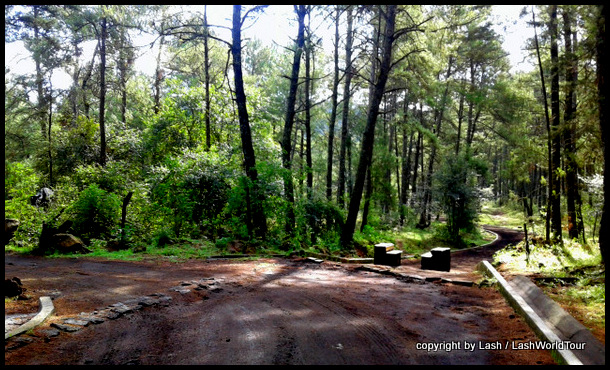
lovely forest near Angahuan
Initially I wanted to climb the volcano (of course!), a trip that takes all day from the tiny indigenous Purepecha village of Angahuan, the closest village to the volcano. But the week I was in the area was excessively rainy, not great for mountain climbing.
In addition, costs & availability of accommodation and food in Anguahan were unclear. And, to cap it off, it was wayyy off season for tourism, which meant that hiring a guide would be very expensive. Nobody to share the costs with.
Instead, I opted to visit Angahuan and Volcan Paricutin as a day trip from nearby Uruapan city, just a 40 minute bus ride away.
So early one morning I headed out by share-taxi to Angahuan. Up and up and up we climbed. More than 1000 M / 3000 ft we ascended from Uruapan to Angahuan village, which sits at 2793 M / 8886 ft. Nearly 9000 ft! But just 30 minutes later we were there.
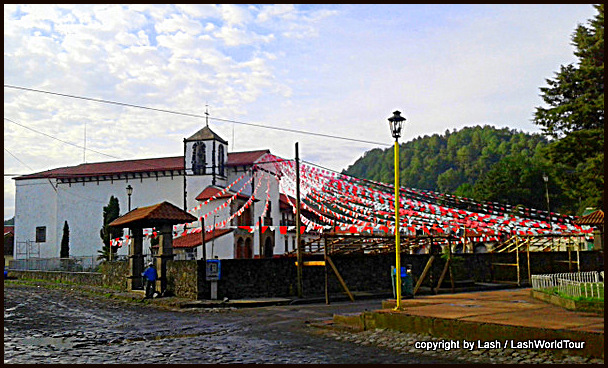
church in Angahuan village – Michocan – Mexico
Angahuan village itself proved to be quite interesting. In fact, it’s literally a different world from the rest of Mexico. It’s a village of indigenous Purepechans, the Indians living in the region before the Spanish arrived in the 1500s. And they’re still living there.
More surprisingly, all the inhabitants speak Purepecha language. Very few speak Spanish, even today! In Angahuan they conduct their lives traditionally, with traditional style wood/stone houses, cooking by wood fires, wearing Purepecha clothing, riding horses and farming.
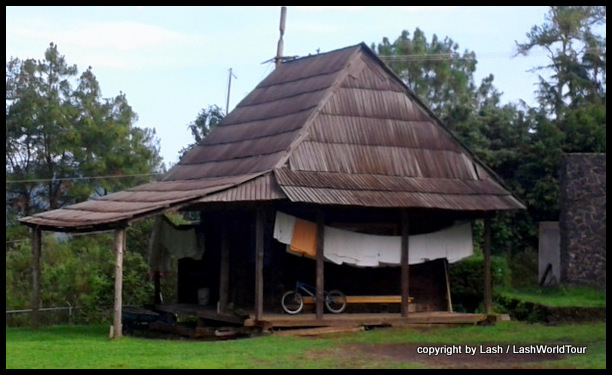
traditional Perepucha house in Angahuan
A few residents have taken to earning their living off the tourist trade. Mostly they rent out horses and act as guides to the volcano and ruins. A few others sell food and drinks to visitors.
Locals at the Centro Tourismo on the edge of town rent out cabins. They also have a tiny museum about the volcano, a large restaurant and stunning panoramic views of Paricutin. Up the road one other family rents out cabins and dorm beds at lower rates.
Otherwise, life in Angauhuan village goes on as it has for millennium, little disturbed by the volcano visitors or the larger Mexican world at large, aside from the addition of Catholic churches.
When the share taxi dropped me off on the edge of Angahuan, I was quickly greeted by one of the Perepucha guides offering his horse to ride me over to the Centro Tourismo, a walk of 20-30 minutes through town. I politely turned him down and strolled out to the viewpoint and restaurant.
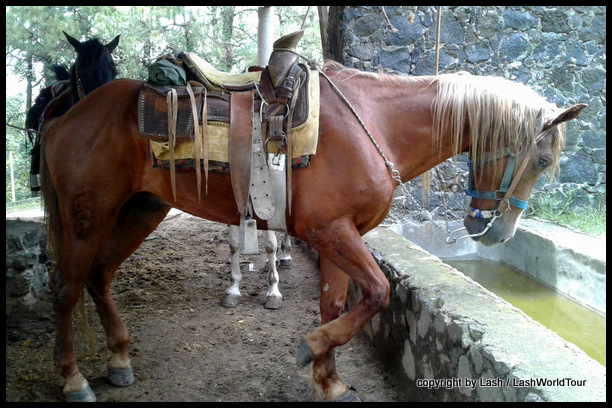 Once there another guide tried his best to convince me to hire him for the mountain climb or walk to the church ruins. I knew it would be expensive, so instead I consulted the restaurant staff about my options.
Once there another guide tried his best to convince me to hire him for the mountain climb or walk to the church ruins. I knew it would be expensive, so instead I consulted the restaurant staff about my options.
Turns out it’s an easy 20-30 minute stroll through a forest on a wide, perfectly clear trail to the ruins.
So after ordering a take-out lunch I set out through the forest. It was very pretty, utterly quiet and great to be walking through a forest once again.
Along the way I passed a few local men here and there. To a man, they were all surprised – and not too pleased it seemed – to see me there, walking alone without a horse or a guide. They all asked me about it. I just smiled and said I was fine and kept on walking.
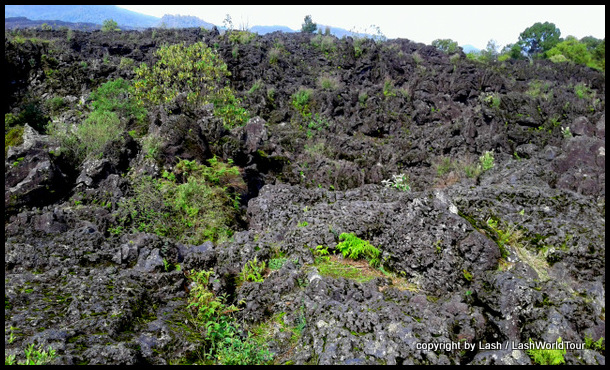
sharp black lava rock
Along the entire trail I could clearly see the volcanic summit, the vast fields of sharp black rock, and the skewed church tower up ahead.
Sure enough, 20 minutes later I was at the church ruins. Nearby many locals were setting up food and handicraft stalls, anticipating the day’s visitors. At that point I was the only one.
I found my way to the ruins, where I had to climb up into, over and around the sharp volcanic lava field to reach the tower. I took a bunch of photos from different angles, then returned to the food stalls area.
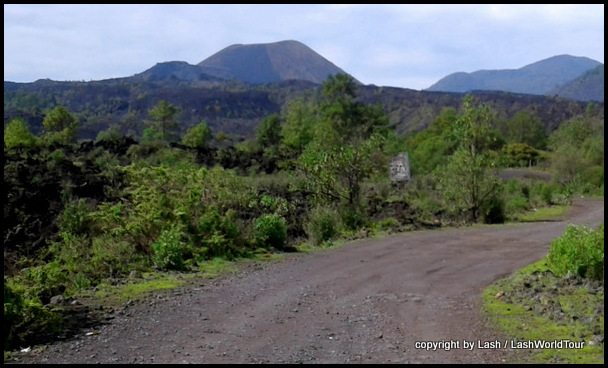
road to Paricutin Volcano through lava fields
Once there I noticed a clear, well worn gravel road heading off towards the volcano. And I befriended some local dogs. One was so thrilled to get human attention, that he decided to accompany me along the road.
We walked out through the lava fields on the road about 30 minutes until it started turning away from the volcano. At that point I headed back to the ruins and food stalls, dog in tow.
To my great surprise, when I got back the place was swarming with visitors! And horses. They were Mexican families, with plenty of kids, all mounted on horses being led by guides. Wowie, talk about a change in scenery!
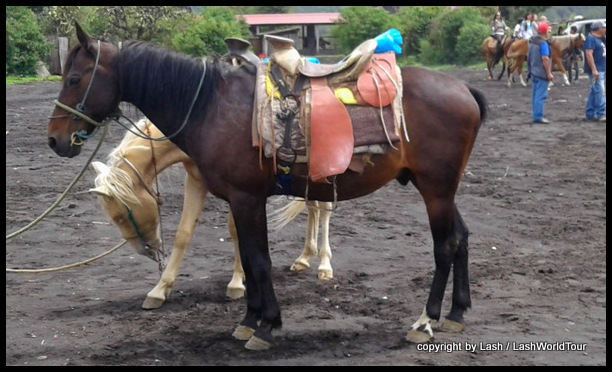
horses and tourists at Volcan Paricutin church ruins
I walked some distance from the crowd then sat down to eat my lunch. Then I took a nap in the forest, under the swaying pine trees and gentle breeze. Fully rested, I hiked back up to the restaurant and viewpoint, where I enjoyed a cup of hot chocolate and admired views of the volcano before returning to Uruapan. A thoroughly enjoyable day trip.
You might also enjoy reading about:
Guanajuato’s Amazing Mummy Museum
=======================================================

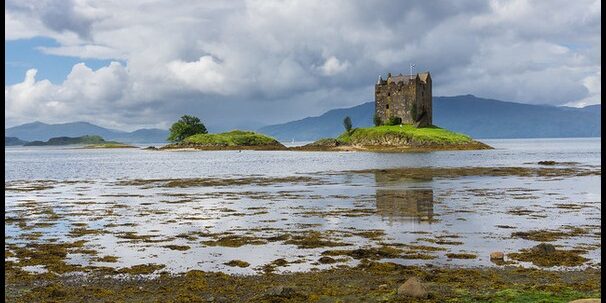


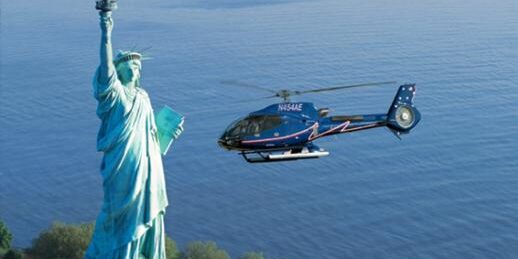
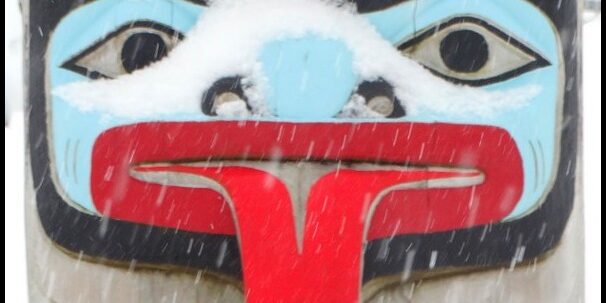


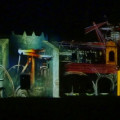
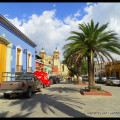
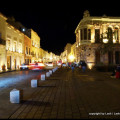

 Hi! I'm Lash, an American nomadic world traveler who's been traveling solo since 1998. I’m passionate about traveling the world nomadically and then sharing it all with you. I hope to inspire you to travel the world, to entertain you with tales from the road, and to help you reach your travel dreams. Welcome!
Hi! I'm Lash, an American nomadic world traveler who's been traveling solo since 1998. I’m passionate about traveling the world nomadically and then sharing it all with you. I hope to inspire you to travel the world, to entertain you with tales from the road, and to help you reach your travel dreams. Welcome! 



